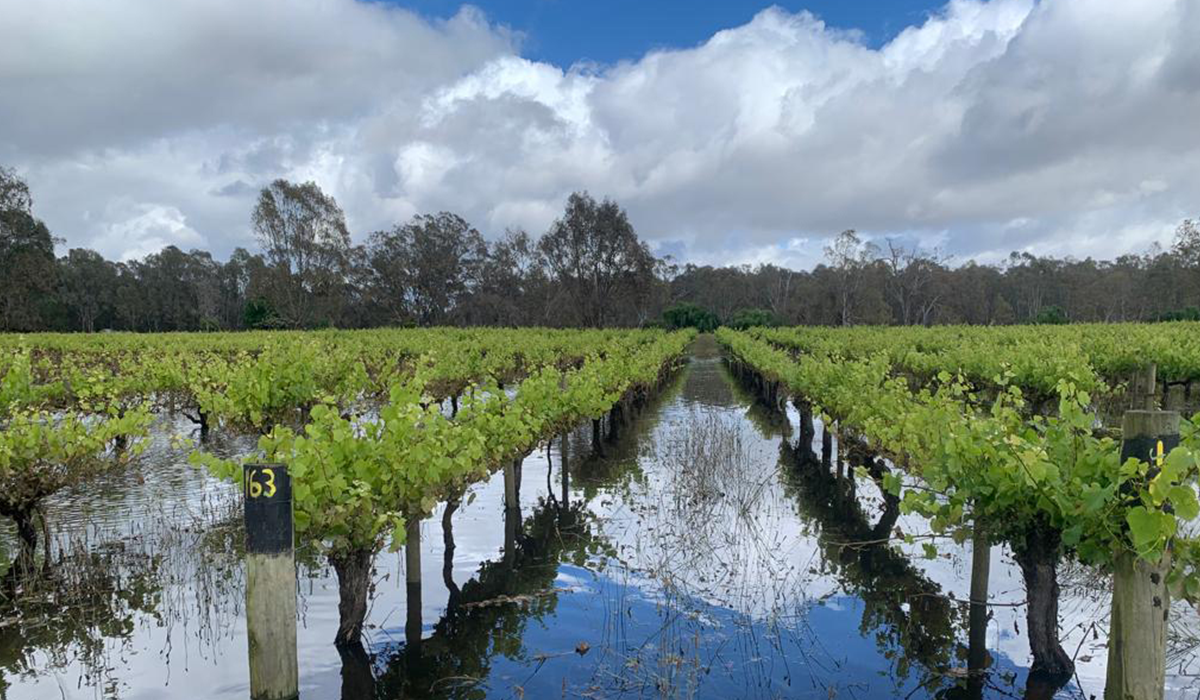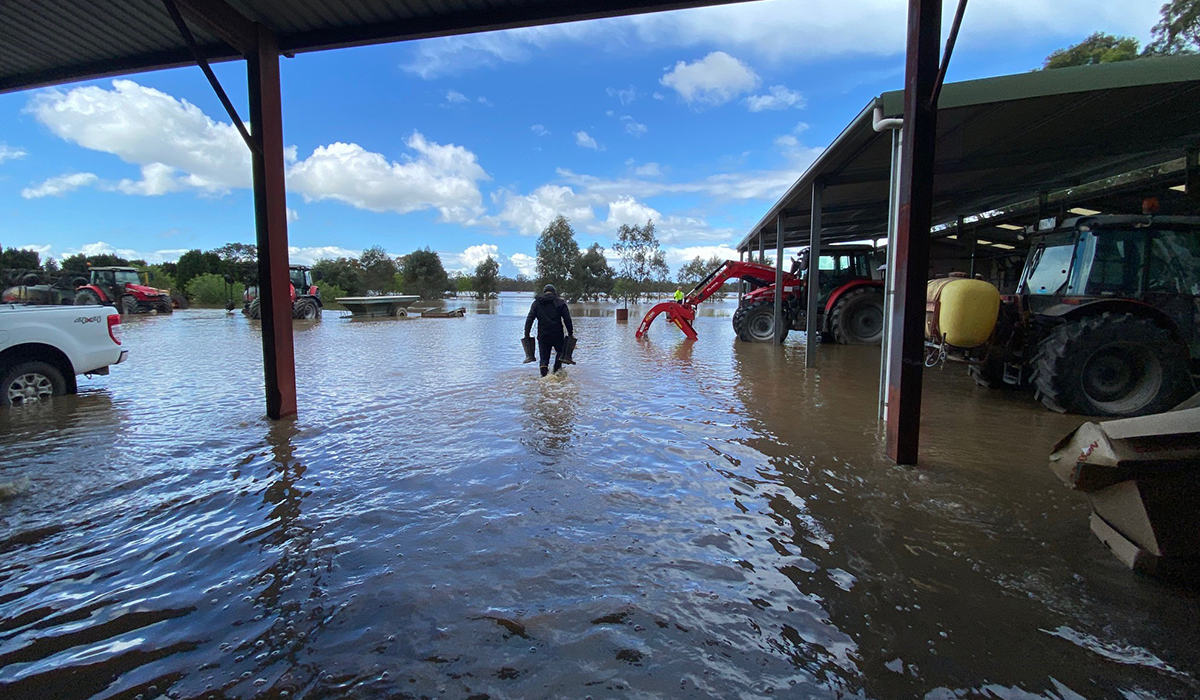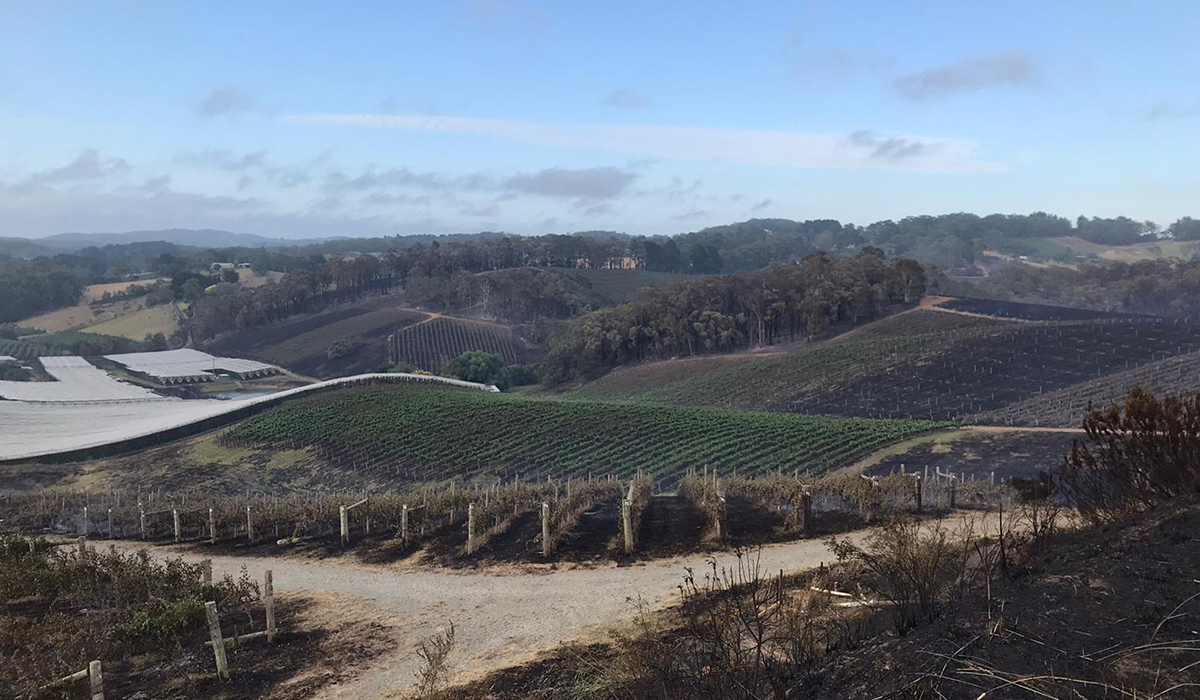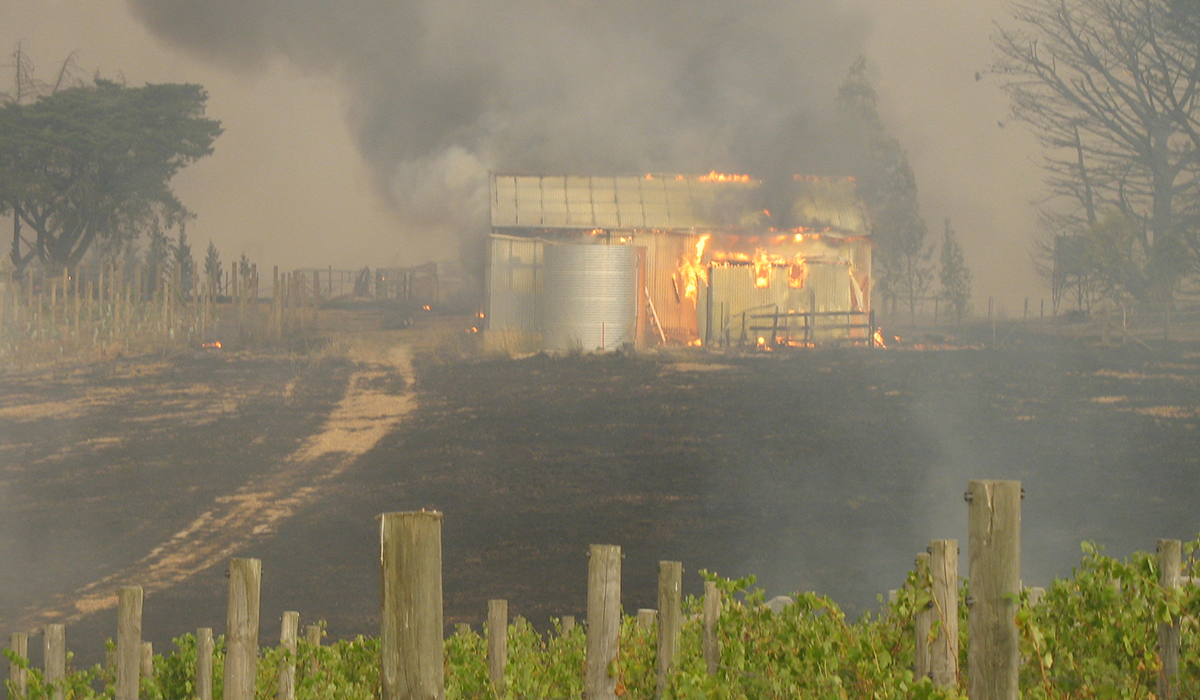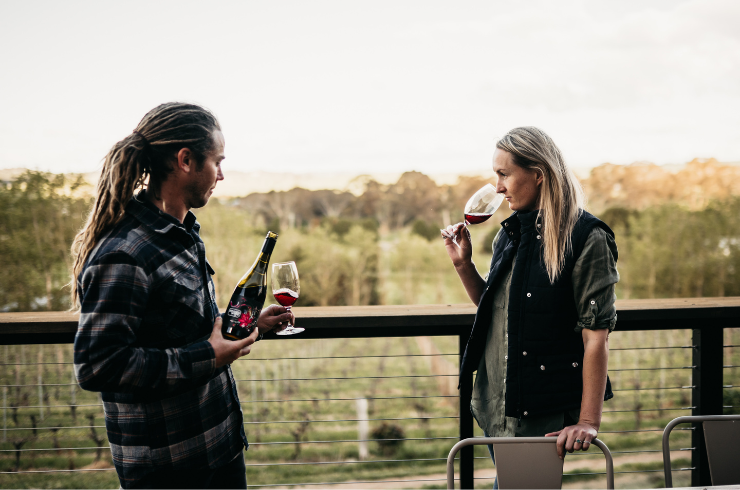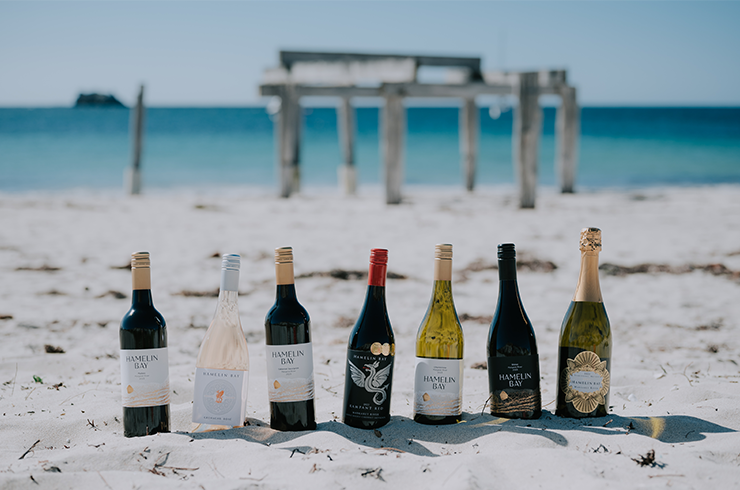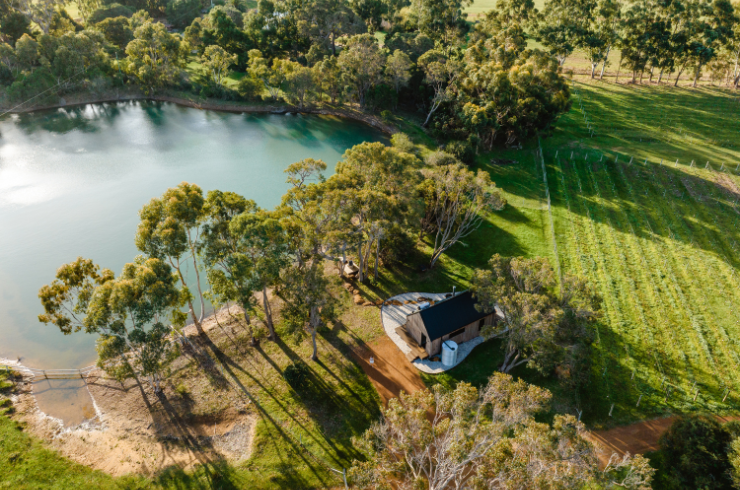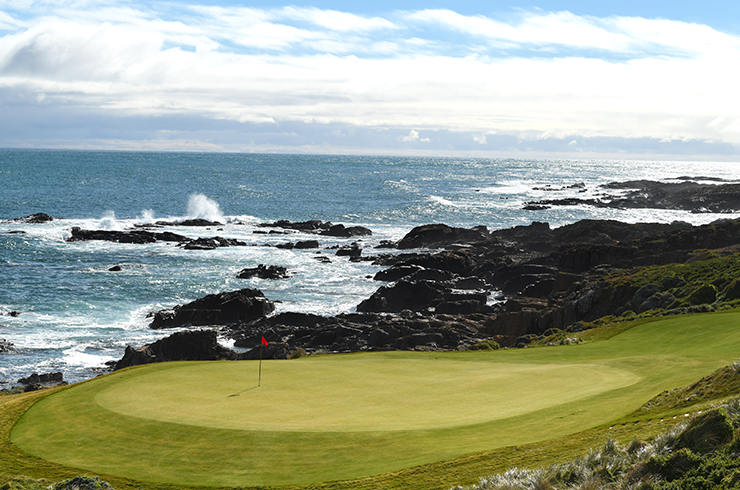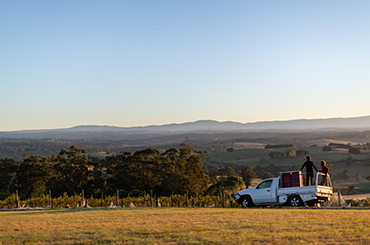All viticulturists, growers and winemakers hope the next season is the one to hang their hat on, given all the work leading up to vintage. But there’s much to consider these days, with seasons becoming more unpredictable. This is a direct result of climate change and with it, natural disasters, from floods to fire, are more common. From mid-2022 up until a few weeks ago, floods left a trail of destruction along the New South Wales coast through to central Victoria and up through Mildura as the Murray River peaked then crossed into parts of South Australia.
In 2019, an out-of-control bushfire razed part of the Adelaide Hills, and in the same year and into 2020 there was no vintage for those affected by smoke taint from fires in the Canberra District, Hunter Valley and Alpine Valleys. The list goes on. More will be added. These disasters have left a trail of devastation, heartache and trauma. How do people cope?
Pfeiffer Wines – Rutherglen, Victoria
Floods | October 27, 2022For six weeks, Jen Pfeiffer could do little else but wait. It didn’t take long for flood waters from the Murray River to breach Sunday Creek’s bank and envelope the Pfeiffer's important 20-hectare Sunday Creek vineyard. Subsiding would be another matter. The site includes old vines, Portuguese reds and bread-and-butter varieties integral to maintaining the brand throughout the year. They were all submerged, with the flood peaking at 8.75 metres in mid-November.
“We couldn’t access the vineyard at all in that time and so many thoughts were going around my head,” says Jen. “Are those precious vines from 1961 and ’62 pinot noir linked to pre-phylloxera Burgundy going to die? The gamay, probably the oldest in the country [from 1974 plantings], are we going to lose those? They are an integral part of our history and that’s hard to cope with, the not knowing.”
On December 9, it was safe enough to drive around the vineyard to assess the damage. Imagine the wreckage. The sludge, debris and decay.
“Aside from the trash and pushed-over fences, what was hard and heart-breaking,” she says, “was all the dead wildlife. Wallabies and kangaroos might have been caught in the flood waters or trapped here, I don’t know, but it was horrible, awful to witness.”
Talking to her in late January, Jen says while the flood caused the vines to defoliate, they are alive and have reshot. How much fruit eventuates this vintage, it’s too early to say, although being 70 per cent down is likely. The reparation work, including getting nitrogen back into the soil and not stressing the vines more, is to ensure they are back on track for vintage 2024.
Still, Jen’s been buoyed by the community response. “People caring and the outpouring of concern from our local industry friends and loyal customers, it’s been unbelievable and it makes me feel very emotional.”
For someone still in the throes of working through this disaster, including sourcing fruit from other regions to make up for the loss, Jen seems even a little optimistic.
“As a winemaker, there’s still something special about going into a vineyard and being one step closer to harvest. The anticipation and excitement of what’s to come; even in tough times you get those feelings. Walking in the vineyard now, you think, ‘ah, veraison, we’re one step closer to harvest’. No two vintages are the same and tough ones make us better winemakers.”
Tahbilk Winery – Nagambie Lakes, Victoria
Floods | October 13, 2022Before fourth-generation winemaker Alister Purbrick describes the disaster which besieged Tahbilk, Victoria’s oldest family-owned winery, he says: “Our team did a magnificent job during the flood and now with the big clean up, too. It gives me confidence as I head into my older years [he’s barely pension age], we are in good hands and can handle anything.”
Alister is semi-retiring and has handed over responsibility to winemaker and general manager Joanne Nash and recently appointed CEO Ross Sudano. Talk about a baptism of fire. Or flood in this instance, as in mid-October, the Goulburn River kept rising, spilling out and across Tahbilk, covering 1214 hectares including 365 hectares of canola, now gone, and 92 hectares of vineyards including the irreplaceable 1860 and 1960s plantings.
“The vineyard equipment shed was slightly flooded and luckily the water wasn’t high enough to get into the tractor motors. We dodged a bullet there,” he says. “The underground cellars of 1864 and 1875 are virtually unscathed and vines were under water only a few days so were not affected. But the irony, we needed rain to remove the silt left on the vines.” Yes, it did rain.
As an historic site, established in 1860, there are limitations to where changes can be made, however, he is all too aware of global warming.
“We’re going to have more extreme weather and we have to mitigate that as best as possible and reduce the risk factor.” One plan is to plant more marsanne on higher ground because it’s synonymous with Tahbilk.
Henschke – Adelaide Hills, South Australia
Bushfire | December 20, 2019Prue Henschke was safe in the Barossa Valley when the Cudlee Creek bushfire in the Adelaide Hills raged. A pine tree collapsed onto power lines with the high voltage conductors hitting wires close to the ground and sparking the deadly outbreak (a class action exceeding $150 million against SA Power Networks is ongoing as a result).
By the time the blaze was contained, it had consumed 25,000 hectares of bushland, homes and vineyards, including the Henschke’s Lenswood site. “Our next-door neighbours, the Knappsteins, said don’t come.
It’s too ferocious.” The day after, Prue and husband Stephen drove to the property to find mere frameworks holding up a buckled roof – if you could still call it a roof – and a smouldering, lunar-looking landscape.
All she could utter was, “oh crikey." Prue says, "I’ve never seen anything so black and smell so rank. It was that shock of everything, just everything was burnt.” An estimated 90 per cent of the vineyard burnt, plus all the sheds, machinery, equipment, trellising, irrigation, infrastructure. Gone.
Aside from being one of the country’s most prestigious producers, albeit Barossa based, the Adelaide Hills was, is, an important part of the business, accounting for about 25 per cent of its production. “I thought, ‘what on earth do we do?’. I was too stressed to think. I was emotionally drained,” she says.
Finally, the Henschkes talked with their vineyard manager and winemakers to work out a recovery plan, then the messages of help started coming in. “Corrina Wright [winemaker at Oliver’s Taranga in McLaren Vale] said: ‘I can drop everything and come’. “I took her up on it,” says Prue.
Then Associate Professor Cassandra Collins and Dr Roberta De Bei from Adelaide University came on board offering a crew of wine science students to help clear the mess. A monumental job made easier with teamwork.
“It was such a heartening experience. We sat down at lunch time with the students and tossed ideas around. I think that’s what put my soul back in place.” A few days later, 33mls of life-giving rain meant water shoots sprouted from the base of the blackened vines. They could be trained.
The site has been reconfigured and expanded with more pinot noir and chardonnay and virus-eliminated grüner veltliner. In 2022, they harvested 2.5 tonnes of fruit; this year they expect 40 tonnes. “And there was a little microcosm of beautiful ghost gums at Lenswood. They didn’t survive but we have replaced them.”
Serrat – Yarra Glen, Victoria
Bushfire | February 7, 2009February 7, 2009. A date known by the moniker, Black Saturday. There was no let up with the heatwave engulfing southern Australia. Temperatures soaring into the 40s. A tinder dry landscape. The Victorian premier at the time, John Brumby, predicted it would be “the worst day in the history of the state”. It turned into one of Australia’s worst bushfire disasters with the highest loss of life: 173 people died.
For Tom Carson, a hot northerly on a summer’s day can make him twitchy. His Yarra Valley home, vineyard and family were under direct threat on Black Saturday.
“It was frightening. A fire started close to us then burnt off in another direction towards the Dandenongs. Later in the day, a southerly change came, and we were covered in smoke,” he says.
“There was an eery silence. Everything went dark. I heard the neighbours yelling and screaming and I was worried about them thinking ‘shit, what happened there?’ Then the fire rushed through our place very quickly. There was not a lot we could do.”
While no less terrifying and potentially lethal, Tom and wife Nadege were dealing with a fast-moving grass fire rather than a ferocious forest or dense bushland blaze. But conditions were insufferably hot and his two terrified daughters, 11 and seven at the time, were inside the house with the animals.
“The fire started burning around the house. The shed was on fire. Nadege was at one end of the house with a water hose and I was at the other end. It was unrelenting.”
Exhausted and without any power, they spent the next three days putting out spot fires. But they were safe. He credits the vineyard for protecting them.
“The shiraz block saved us because the rows were planted east-west and the fire came from the south so it slowed up once it hit the vineyard and pushed around it.”
It still turned into a smouldering mess with bird-protection nets melted into the charred vines. The pump shed burnt down, the main shed too and only 10 days earlier he had taken possession of a new tractor. All gone. “We were very fortunate to get through it alive with the house intact. It’s weird and hard because not long after, we heard all those horrendous stories of what happened elsewhere.”
Tom had recently taken on a new job at Yabby Lake on the Mornington Peninsula and his focus was making those wines. Yet every day, he would come home to see the ruins of their small family business, Serrat.
“We were into vintage at and so the mess stayed at home. Everything was black, ashy, burnt, I mean, where do you start? It was so hard to get over that. I was worn out.”
Three months after the fire, Clare Halloran, then chief winemaker and general manager at TarraWarra Estate, came to the rescue. She sent people to help with end posts and “the first step at rebuilding our site started. We could then chip away. Clare’s support and help were so important. Just to know people cared and wanted to help meant a lot.”
This article appears in issue #69 of Halliday magazine. Become a member to receive the print publication as well as digital access.
